In the figure S1 and S2 are two light springs of stiffness k and 4k respectively. When springs are in relaxed state, seperation between their free ends is 2x0 . A uniform solid cylinder of mass m and radius R(<x0) is placed exactly midway between the free ends of the springs with its axis horizontal and perpendicular to the springs . Now consider the two cases separately.
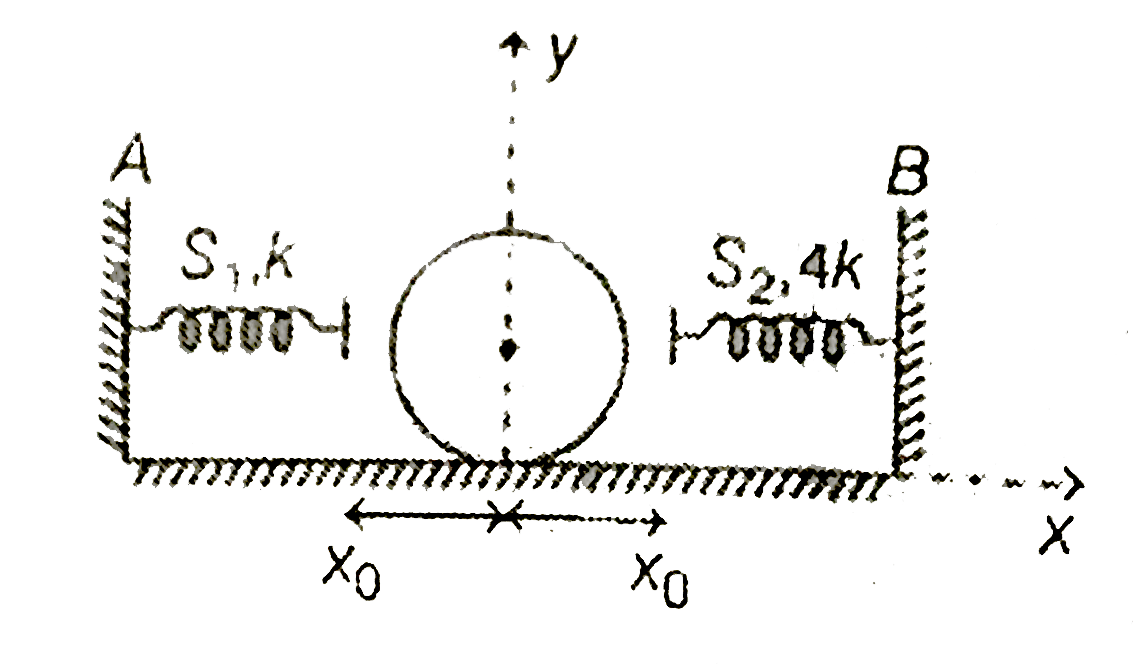
Case I : The cylinder is imparted speed v0 towards left. When the cylinder comes to rest momentarily the co-ordinates of its centre are either (−x1,R) or (x2,R) .
Case II: The Cylinder is imparted speed v0 toward left and angular speed ω0 in clockwise sense simultaneously . At the time of maximum compression in the springs the co-ordinates of centre of the cylinder are either (−x3,R) or (x4,R) Now answer the following questions assuming that friction is absent every where.
Choose the correct option
x1=x2
x1=x3
x1=x4
x3=x4
The correct Answer is:B
Step by step video & image solution for In the figure S_(1) and S_(2) are two light springs of stiffness k and 4k respectively. When springs are in relaxed state, seperation between their free ends is 2x_(0) . A uniform solid cylinder of mass m and radius R( lt x_(0)) is placed exactly midway between the free ends of the springs with its axis horizontal and perpendicular to the springs . Now consider the two cases separately. Case I : The cylinder is imparted speed v_(0) towards left. When the cylinder comes to rest momentarily the co-ordinates of its centre are either (-x_(1), R) or (x_(2),R) . Case II: The Cylinder is imparted speed v_(0) toward left and angular speed omega^(0) in clockwise sense simultaneously . At the time of maximum compression in the springs the co-ordinates of centre of the cylinder are either (-x_(3),R) " or "(x_(4),R) Now answer the following questions assuming that friction is absent every where. Choose the correct option by Physics experts to help you in doubts & scoring excellent marks in Class 11 exams.
Updated on:21/07/2023Topper's Solved these Questions
- ROTATIONAL MOTIONBOOK - DC PANDEY ENGLISHCHAPTER - ROTATIONAL MOTIONEXERCISE - Matrix Matching Type Questions
16 Videos
- ROTATIONAL MOTIONBOOK - DC PANDEY ENGLISHCHAPTER - ROTATIONAL MOTIONEXERCISE - Integer Type Questions
17 Videos
- ROTATIONAL MOTIONBOOK - DC PANDEY ENGLISHCHAPTER - ROTATIONAL MOTIONEXERCISE - More than one option is correct
36 Videos
- ROTATIONAL MECHANICSBOOK - DC PANDEY ENGLISHCHAPTER - ROTATIONAL MECHANICSEXERCISE - Subjective Questions
2 Videos
- SEMICONDUCTORS AND ELECTRONIC DEVICESBOOK - DC PANDEY ENGLISHCHAPTER - SEMICONDUCTORS AND ELECTRONIC DEVICESEXERCISE - More than One Option is Correct
3 Videos
Similar Questions
There are two ideal springs of force constants K1 and K2 respectively. When both springs are relaxed the separation between free ends is L. Now the particle of mass m attached to free end of left spring is displaced by distance 2L towards left and then released. assuming the surface to be frictionless. (K1K2=43). (Neglect size of the block)

The time interval after which mass 'm' hits the right spring will be
View SolutionThere are two ideal springs of force constants K1 and K2 respectively. When both springs are relaxed the separation between free ends is L. Now the particle of mass m attached to free end of left spring is displaced by distance 2L towards left and then released. assuming the surface to be frictionless. (K1K2=43). (Neglect size of the block)
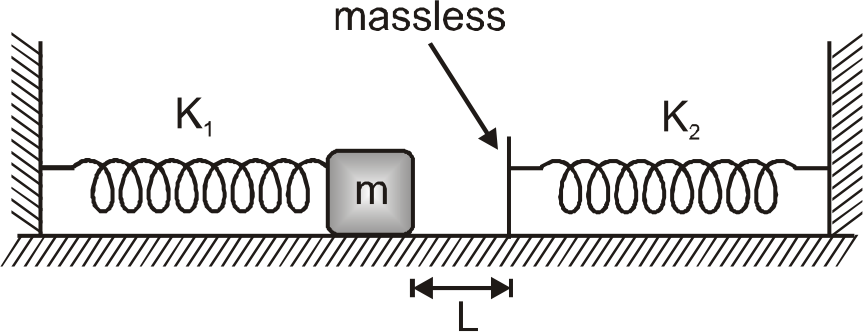
The maximum compression produced in right spring will be
View Solution
Knowledge Check
A spring is stretched by applying a load to its free end. The strain produced in the spring is
AvolumetricBshearClongitudinal and shearDlongitudinal.
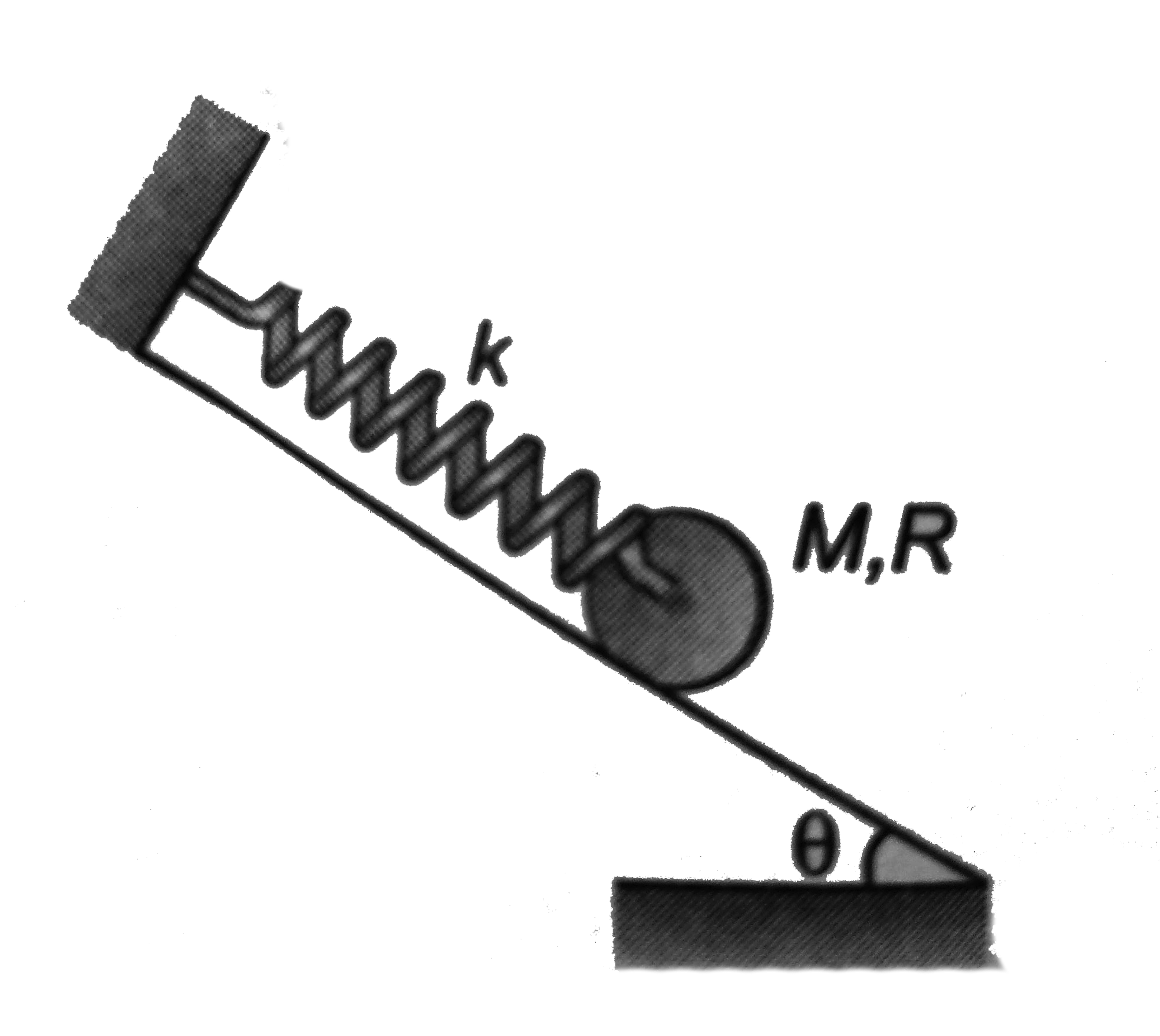
A uniform cylinder of mass M and radius R is released from rest on a rough inclined surface of inclination θ with the horizontal as shown in figure. As the cylinder rolls down the inclined surface, the maximum elongation it the spring stiffness k is
View SolutionThere are two ideal springs of force constants K1 and K2 respectively. When both springs are relaxed the separation between free ends is L. Now the particle of mass m attached to free end of left spring is displaced by distance 2L towards left and then released. assuming the surface to be frictionless. (K1K2=43). (Neglect size of the block)
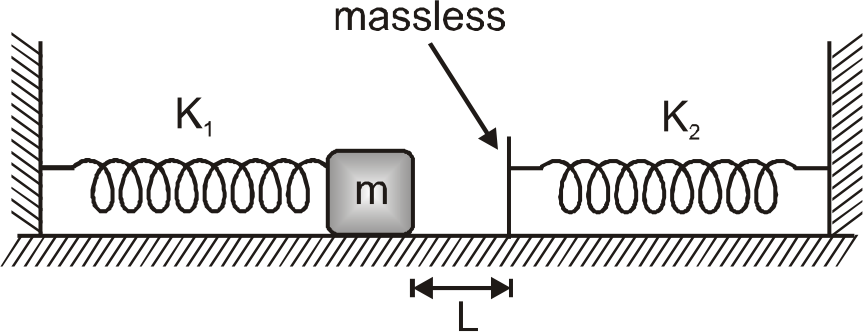
Suppose mass m hits the right spring and sticks to it. The extension in left spring when mass ‘m’ is in equilibrium position during its motion is :
View SolutionTwo spring P and Q having stiffness constants k1 and k2(<k1), respectively are stretched equally. Then
View SolutionA spring is stretched by applying a load to its free end. The strain produced in the spring is
View SolutionA block of mass m is moving with an initial velocity v0 towards a stationary spring of stiffness k attached to the wall as shown in figure
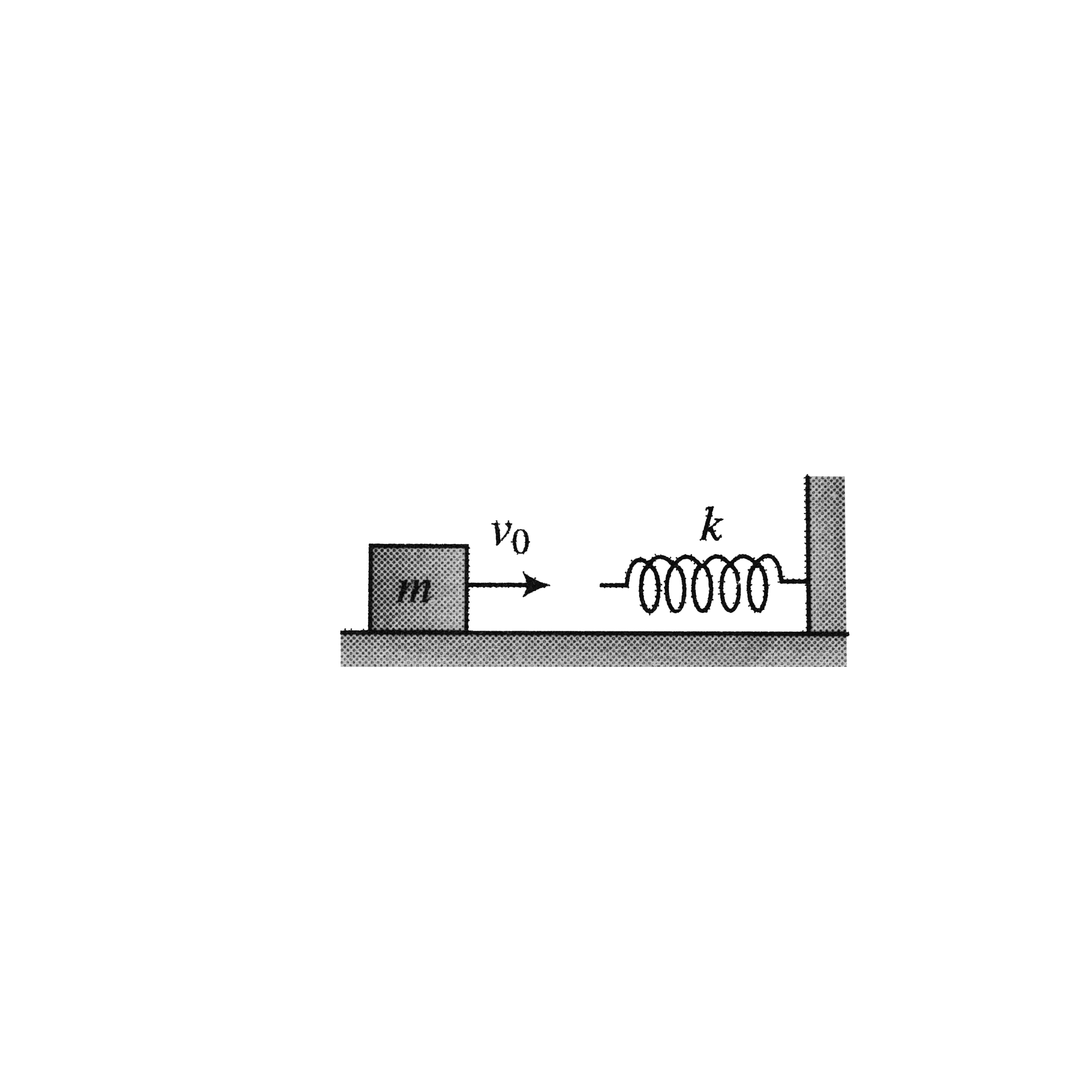
a. Find the maximum compression in the spring.
b. Is the work done by the spring negative or positive?
View SolutionA rod mass (M) hinged at (O) is kept in equilibrium with a spring of stiffness (k) as shown in figure. The potential energy stored in the spring is .
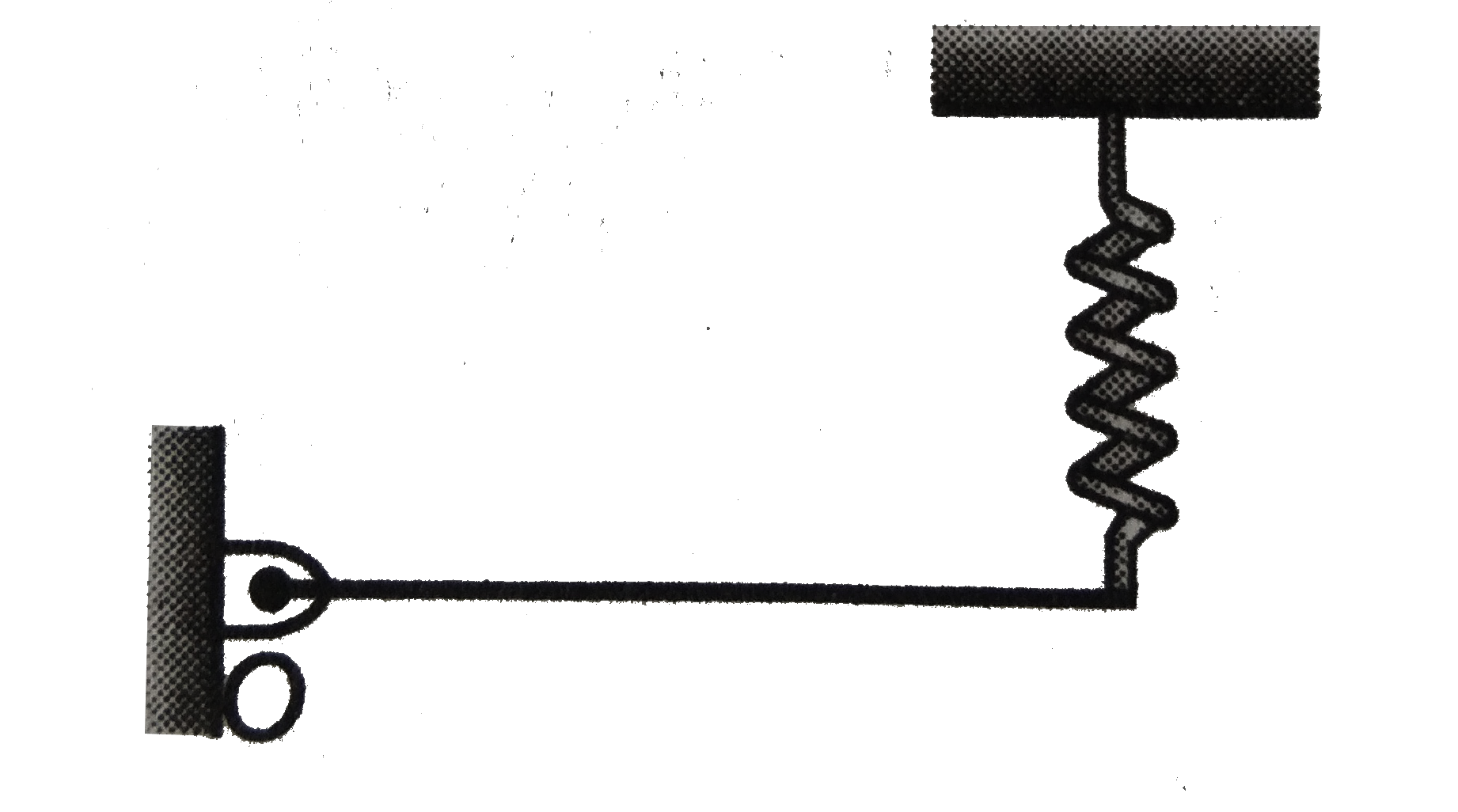
View SolutionIn the figure, a block of mass m is rigidly attached to two identical springs of stiffness k each. The other ends of the springs are connected to the fixed wall. When the block is in equilibrium, length of each spring is b, which is greater than the natural length of the spring. The time period of the oscillation of the block if it is displaced by small distance perpendicular to the length of the springs and released. Space is gravity free.

View Solution
